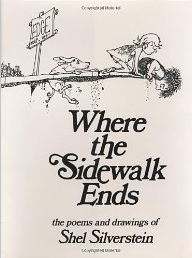In Summarizing and Synthesizing: What’s the Difference? we discussed the two related reading comprehension strategies. As with any strategy, students need to be introduced to it, observe the strategy in use through think-alouds, and have opportunities for repeated guided practice. The lessons highlighted below help you do just that in your classroom.
Summarizing
Reading Informational Texts Using the 3-2-1 Strategy (Grades K-2)
In this lesson, students in grades K-2 learn to use the 3-2-1 strategy, which involves writing about three things they discovered, two things they found interesting, and one question they still have. After teacher modeling, students read a magazine article independently and use the 3-2-1 strategy to comprehend what they read. This lesson meets the following NCTE/IRA Standards: 1, 3.
Lesson 8: Summarizing Information (Grades K-5)
In this lesson, students practice summarizing by extracting the Five Ws (who, what, when, where, why) and the H (how) from feature stories in local newspapers. The lesson could be adapted for use with other texts as well. Primary teachers could read a news article aloud, perhaps from National Geographic for Kids or another student periodical, and then assist students in identifying the Five Ws. This lesson meets the following NCTE/IRA Standards: 1, 3.
 Choosing One Word: Summarizing Shel Silverstein’s “Sick” (Grades 1-2)
Choosing One Word: Summarizing Shel Silverstein’s “Sick” (Grades 1-2)
After reading Shel Silverstein’s “Sick” aloud, students summarize the poem and count the words in their summary. They then summarize the poem again, using only one word. Students explain their choices and discuss the various words offered as a summary. Although this lesson plan uses the poem “Sick” as an example, the activity can be done with a text of any length or genre: poetry, picture books, short stories, plays, and novels. This lesson meets the following NCTE/IRA Standards: 1, 3, 4, 5, 11, 12.
Guided Comprehension: Summarizing Using the QuIP Strategy (Grades 3-6)
This lesson plan, for grades 3-6 from ReadWriteThink, teaches students to summarize information by graphically organizing information in response to questions, then reorganizing their answers into paragraph form. This lesson meets the following NCTE/IRA Standards: 1, 2, 3, 7, 8, 11.
Synthesizing
Synthesizing Lesson Plans (Grades K-5)
While not full lessons, these four activities can help students learn how to synthesize while reading. The activities meet the following NCTE/IRA Standards: 1, 3.
Germs and the Body (Grades 3-5)
Written as a science lesson, this learning experience provides opportunity for students to practice synthesizing as they read science-themed informational text. This lesson meets the following NCTE/IRA Standards: 1, 3, 5, 6, 8, 11, 12.
This article was written by Jessica Fries-Gaither. Jessica is an education resource specialist at The Ohio State University and project director of Beyond Weather and the Water Cycle and Beyond Penguins and Polar Bears. She has taught in elementary and middle school settings. Email Jessica at beyondweather@msteacher.org.
Copyright February 2012 – The Ohio State University. This material is based upon work supported by the National Science Foundation under Grant No. 1034922. Any opinions, findings, and conclusions or recommendations expressed in this material are those of the author(s) and do not necessarily reflect the views of the National Science Foundation. This work is licensed under an Attribution-ShareAlike 3.0 Unported Creative Commons license.



